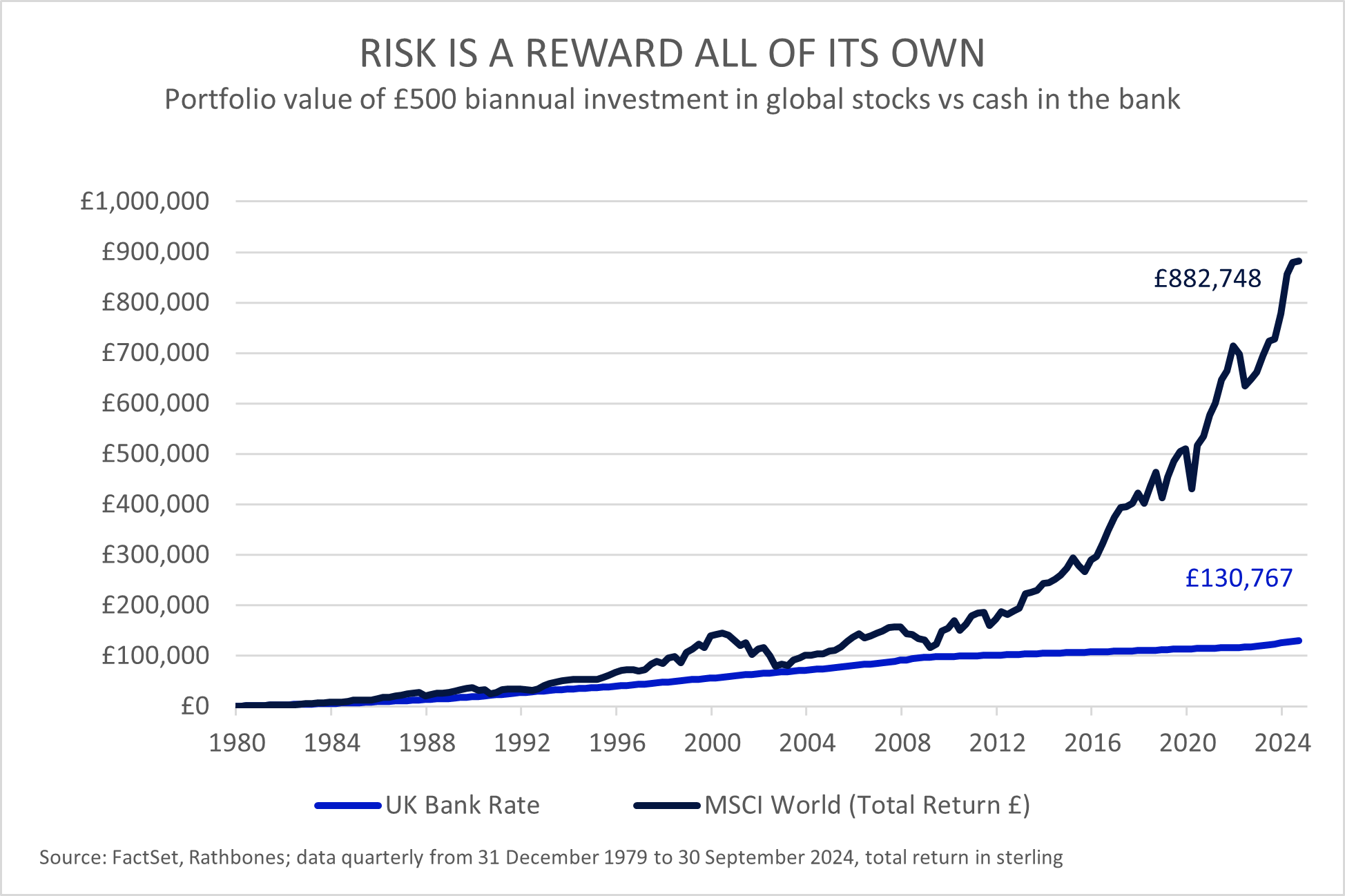‘Active management costs more. But it can also deliver more’
James Crossley looks ahead to 2025 through the lens of active management…
Yet this advice can be so hard to give, especially with today’s 24/7 news cycle, daily portfolio prices accessible on everyone’s phone, and political upheavals creating uncertainty with disquieting regularity.
But in reality, it’s always been like this. Except the phones. They’re new.
Governments have changed. Wars have started and ended. Energy prices have varied. People have argued. Fashions have come and gone. And through it all, stock markets have risen. Those who have invested have been rewarded well above those who have saved in cash or spent all their money. We think this is such an important message for underlying clients, and one that we work hard to help our IFA partners convey.

Speaking of changing fashions, the prevalence of passive investments is having a noticeable impact on investing. The rise of passive, allied with technological improvements, has reduced the cost of investment and made it easier for more people to invest. This is undeniably a good thing. But just as we think passives have a place and a role to play in portfolios, we believe active management does too. Both have pros, both have cons. It’s critical that we are aware of them.
Of course, by definition, active management introduces deviation from a benchmark. That makes it important to understand exactly what you’re investing in. It’s the Ronseal test: will it do what it says on the tin? We think that risk is mitigated by looking for teams with long track records, who have a clear process and a strong culture. Often, this combination can be found in smaller, boutique fund houses which can focus on what they do well, rather than trying to be all things to all people.
Seven ride into town, three ride out
As for the cons of passive investing, the main one is what you don’t get. You don’t get the companies of tomorrow, you get those at the top today. You miss the discovery of great businesses before they join the ranks of the large and established. Meanwhile, greater passive investment can reduce the funding received by these worthy up-and-coming companies, to the benefit of incumbents.
Another con is today staring us all in the face: concentration risk. Passive strategies overwhelmingly use market-cap-weighted indices. This means new flows mostly go straight into the largest, most expensive companies, making them yet larger and more expensive.
The Magnificent Seven tech companies astride the S&P 500 make up almost 35% of the entire index. Now, they are there for a reason: these are great companies, many of which we own. But putting more than a third of a stock portfolio into fewer names than you have fingers is blatantly a risk. Remember, in the film, only three come out alive.
Passives have done very well in the bull market of the last decade as stocks have forged ahead, led by fewer and fewer companies at the very top. By their nature, passive investment flows exaggerate those moves and give them momentum. That could very well work the same way on the way down.
James Crossley is head of asset management distribution at Rathbones

